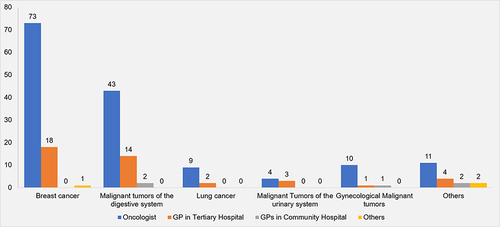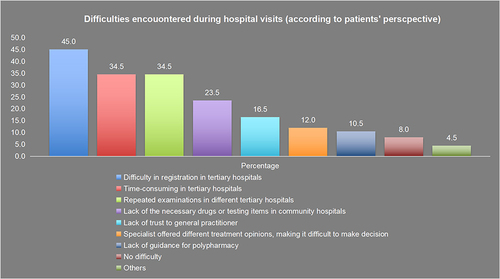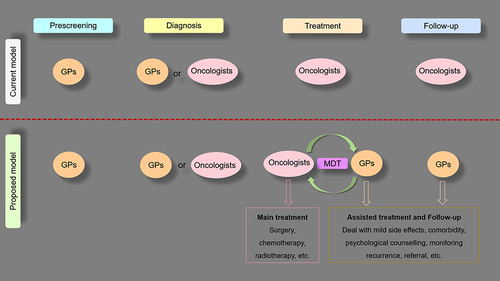Figures & data
Table 1 Characteristics of Patients Who Completed the Questionnaire (n = 200)
Figure 1 Patient preferences for oncology care based on cancer type. This figure illustrates that patients predominantly preferred oncologists affiliated with tertiary hospitals for cancer treatment across various cancer types. A minority of patients opted for general practitioners within tertiary hospitals. The proportion of patients selecting general practitioners at community hospitals was notably low.

Figure 2 Patients’ choice of oncologist vs GP based on cancer type (%). The figure demonstrated that 57.1–83.3% patients were more inclined to choose oncologist over GP, with only 16.7–42.9% opting for GPs.

Figure 3 Challenges encountered during hospital visits from the patients’ perspective. This figure highlights the primary difficulties faced by cancer patients during visits to tertiary hospitals, including cumbersome registration processes, time-consuming procedures, and repetitive examinations. In community hospitals, the main challenges identified by patients include the unavailability of necessary medications or testing items, and a lack of trust in the capabilities of GPs.

Table 2 Multivariate Logistic Regression Analysis to Analyze Factors That Influenced Patients Seeking General Practitioners (GPs) for Cancer Care
Table 3 Multivariate Logistic Regression Analysis to Analyze Factors That Influenced Patients’ Expectation of Seeking General Practitioners (GPs) in Future for Cancer Care
Figure 4 The current model of cancer management in southern China vs the proposal model in our study. Currently, cancer patients in southern China are mainly managed by oncologists. In the future, we expect that GPs could play a more active role in cancer management, such as deal with mild side effects, comorbidity, psychological counselling, monitoring recurrence or referral.

